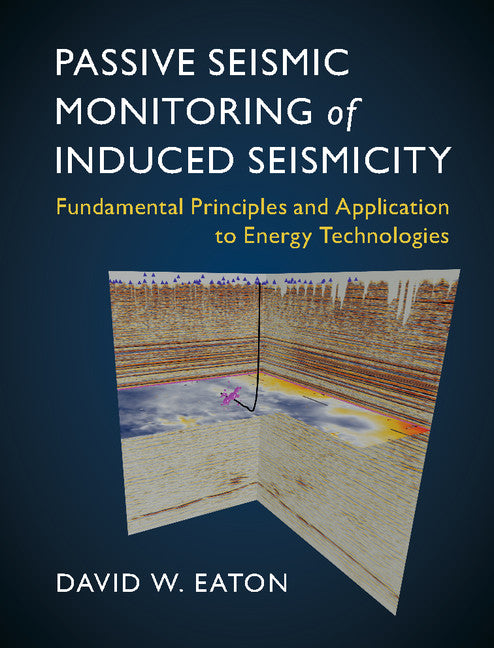Freshly Printed - allow 4 days lead
Couldn't load pickup availability
Passive Seismic Monitoring of Induced Seismicity
Fundamental Principles and Application to Energy Technologies
An introduction to the principles and applications of passive seismic monitoring, providing an accessible overview of current research and technology.
David W. Eaton (Author)
9781107145252, Cambridge University Press
Hardback, published 26 April 2018
360 pages
25.4 x 19.2 x 2.2 cm, 1.01 kg
'This comprehensive text is a much-needed and timely overview of topics related to seismic monitoring of induced earthquakes. It not only provides a thorough treatment of how microseismic monitoring is done and the data are analyzed, it provides a valuable overview of how and why injection-induced seismicity occurs.' Mark Zoback, Stanford University, California
The past few decades have witnessed remarkable growth in the application of passive seismic monitoring to address a range of problems in geoscience and engineering, from large-scale tectonic studies to environmental investigations. Passive seismic methods are increasingly being used for surveillance of massive, multi-stage hydraulic fracturing and development of enhanced geothermal systems. The theoretical framework and techniques used in this emerging area draw on various established fields, such as earthquake seismology, exploration geophysics and rock mechanics. Based on university and industry courses developed by the author, this book reviews all the relevant research and technology to provide an introduction to the principles and applications of passive seismic monitoring. It integrates up-to-date case studies and interactive online exercises, making it a comprehensive and accessible resource for advanced students and researchers in geophysics and engineering, as well as industry practitioners.
Preface
List of symbols
Part I. Fundamentals of Passive Seismic Monitoring: 1. Constitutive relations and elastic deformation
2. Failure criteria and anelastic deformation
3. Seismic waves and sources
4. Stress measurement and hydraulic fracturing
Part II. Applications of Passive Seismic Monitoring: 5. Passive-seismic data acquisition
6. Downhole microseismic processing
7. Surface and shallow-array microseismic processing
8. Microseismic interpretation
9. Induced seismicity
Appendix A. Glossary
Appendix B. Signal-processing essentials
Appendix C. Data formats
References
Index.
Subject Areas: Mining technology & engineering [TTU], Environmental monitoring [TQD], Volcanology & seismology [RBC], Geophysics [PHVG], Mining industry [KNAT]


